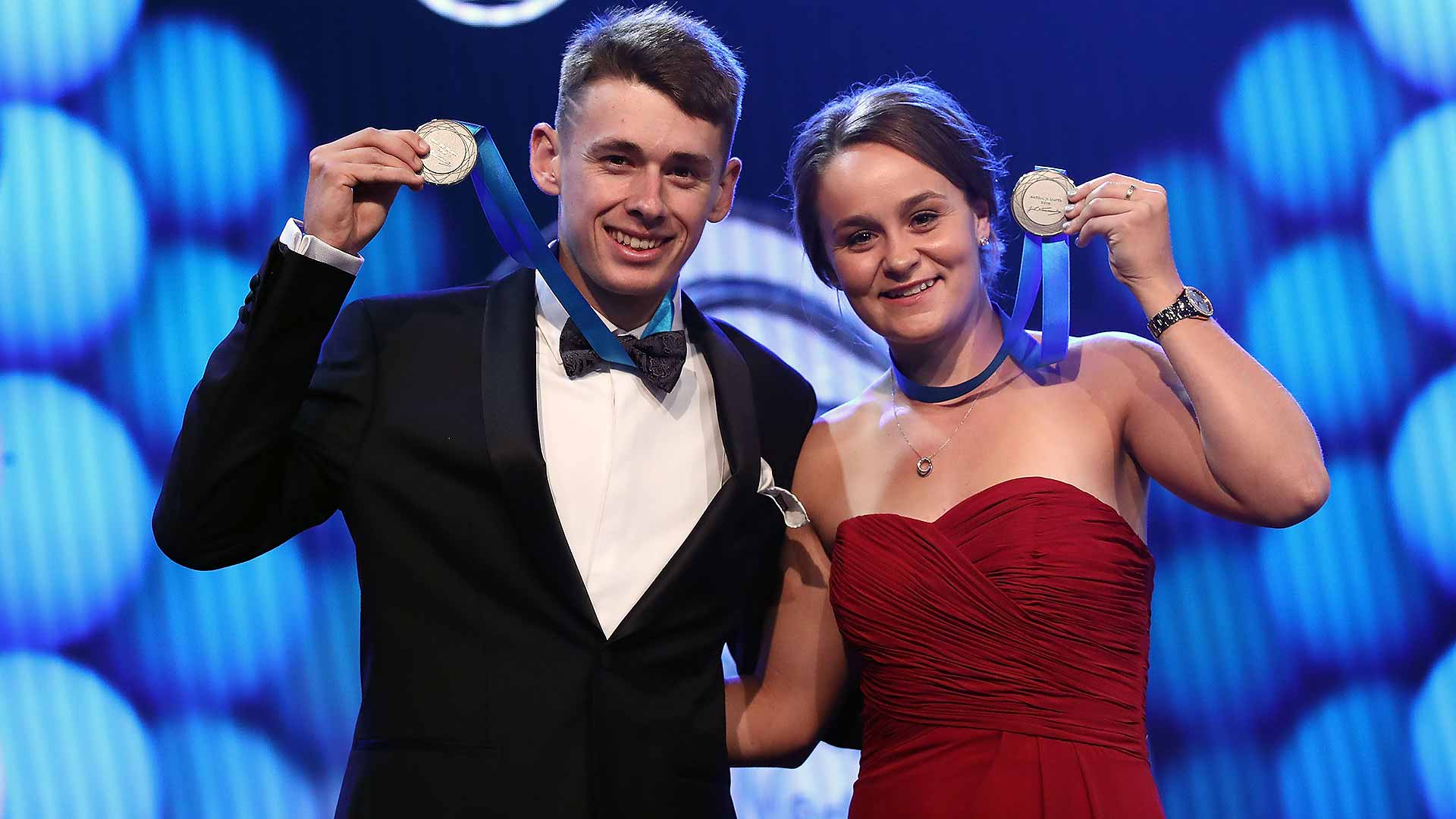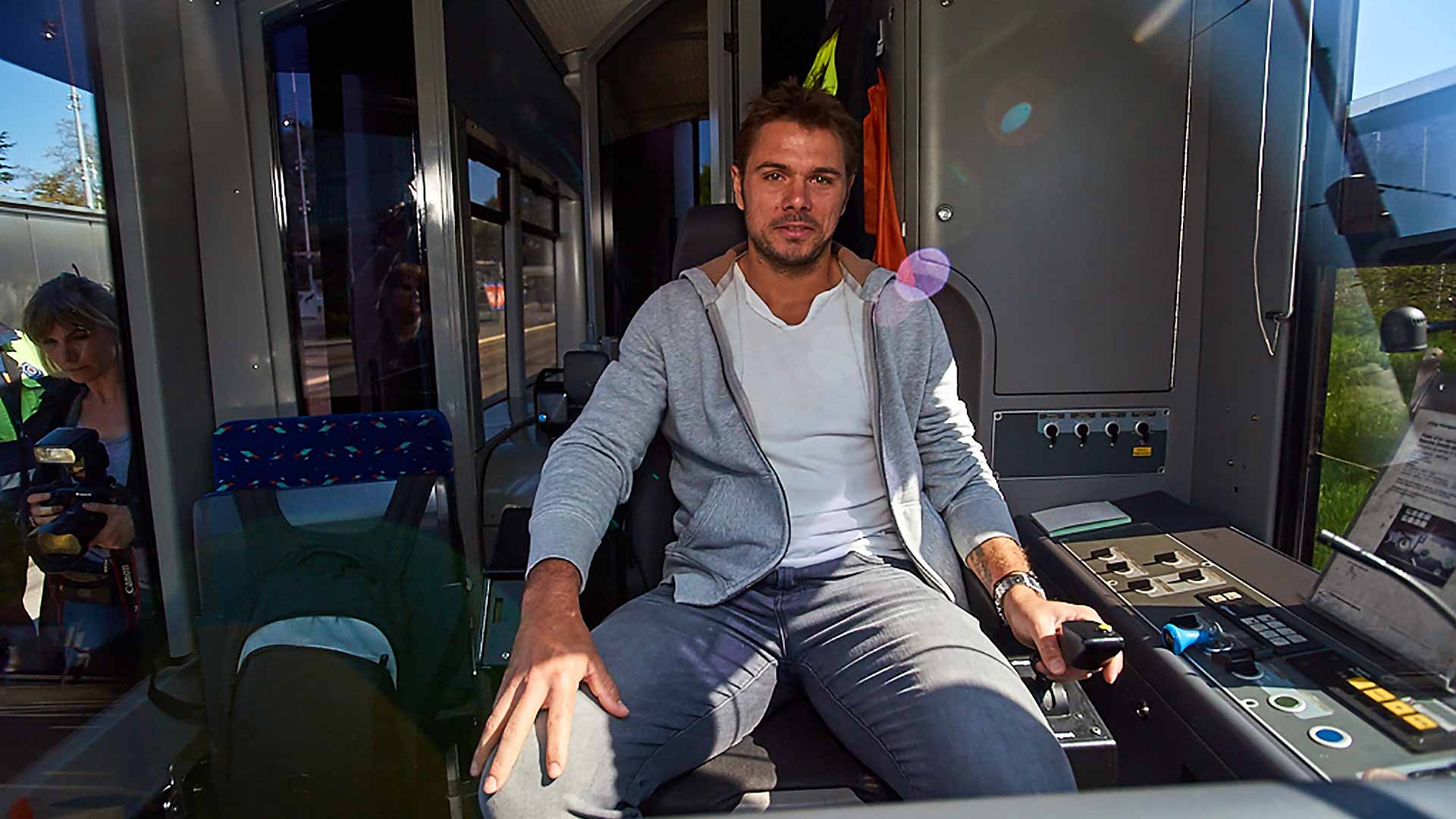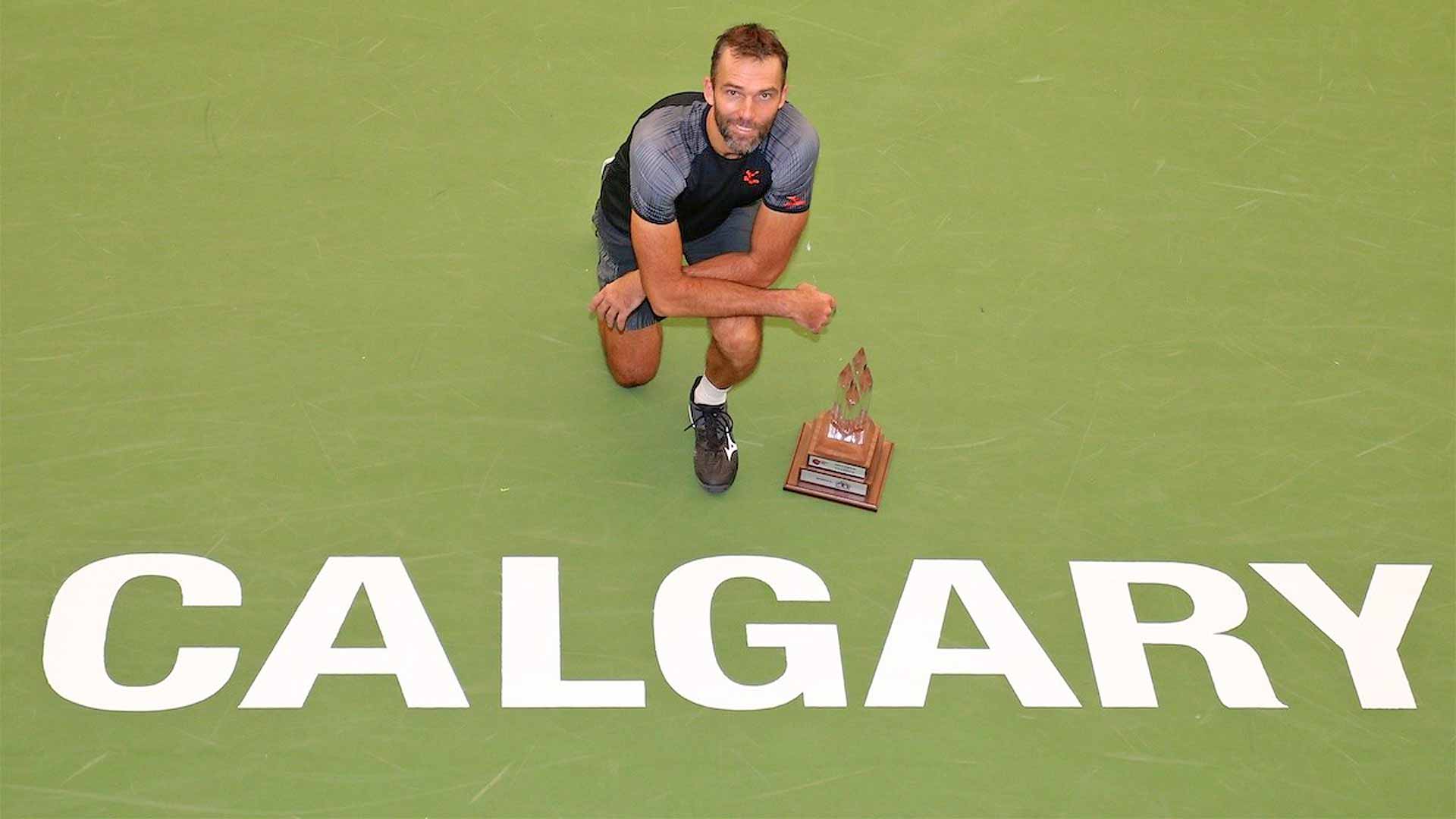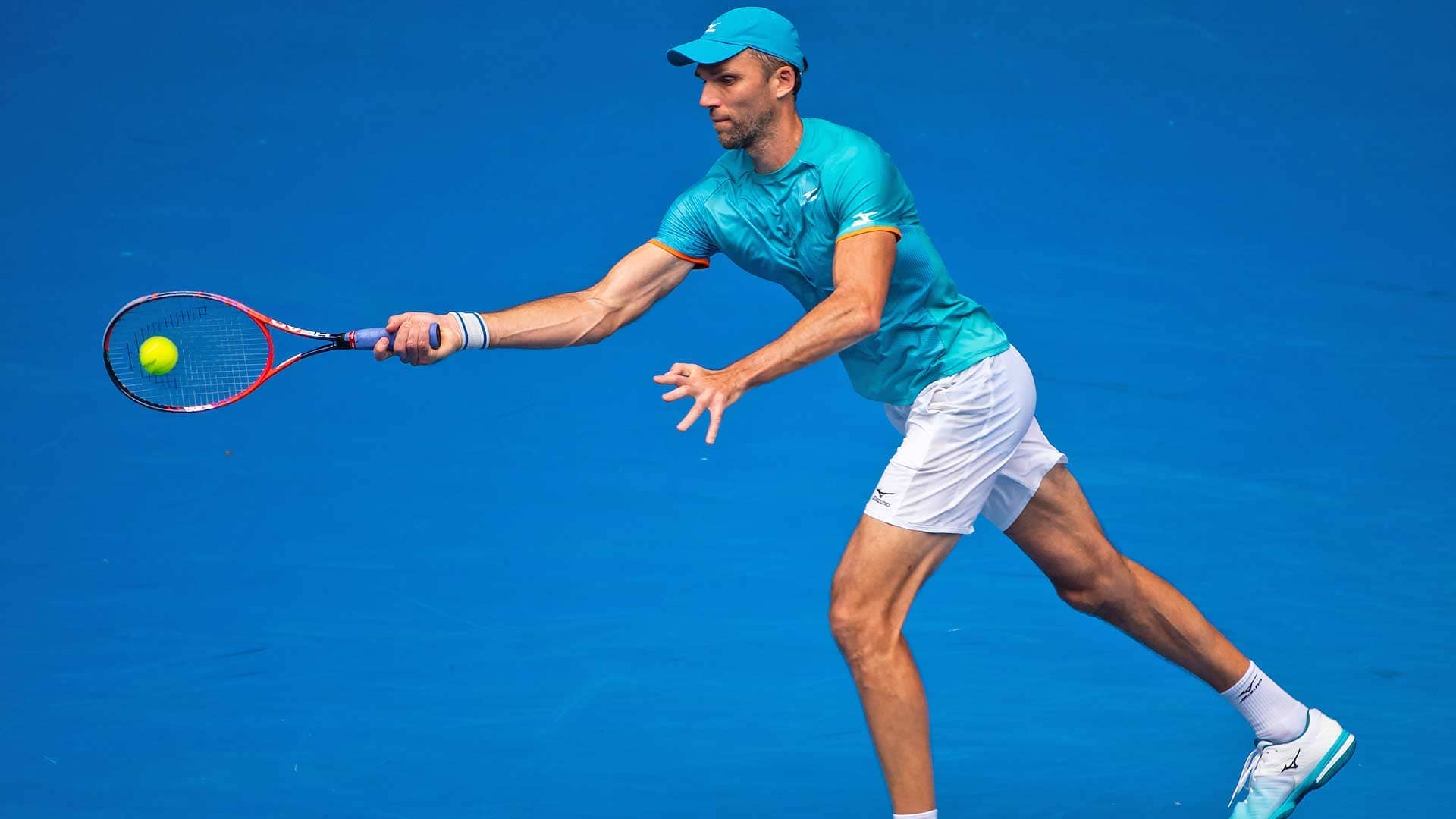John McEnroe: An Artist At No. 1
John McEnroe: An Artist At No. 1
The iconic American, who played with great touch and elan
In the fifth profile of a series on the 26 players to rise to No. 1 in the FedEx ATP Rankings, ATPTour.com looks back on the career of John McEnroe. View Full List
First week at No. 1: 3 March 1980
Total weeks at No. 1: 170
Year-End No. 1s: 1981-84
As World No. 1
John McEnroe replaced his great rival Bjorn Borg to become No. 1 in the FedEx ATP Rankings for the first time on 3 March 1980, initially for three weeks. “To look and go, ‘Oh my God, there’s not one person above me is not something when I was growing up that I was expecting to happen,” said McEnroe, last month. “It was quite surprising to look at my name and below it be like Bjorn Borg and Jimmy Connors.” He reached the summit of men’s professional tennis on a record 14 different occasions until 8 September 1985. His fourth period at No. 1, from 3 August 1981 to 12 September 1982, was his longest at 58 weeks. The 1981-84 year-end ATP Tour No. 1 added, “It depends on the player, but the most important thing when I was playing was who’s No. 1 at the end of the year. That was the most important. You were the best overall. Your 12-month results were the best of anyone.” He is seventh in the list of most weeks at No. 1 with 170 weeks and ranked in the year-end Top 10 on 10 occasions (1978-85, 1987, 1989). Read 40th Anniversary Feature
Grand Slam Highlights
McEnroe made an immediate impact on the world stage, initially as the 1977 Roland Garros junior and mixed doubles champion (w/childhood friend Mary Carillo) in his first Grand Slam championship. Then, as an 18-year-old qualifier, he went on to reach the Wimbledon semi-finals (the youngest for 100 years), losing to Jimmy Connors in four sets. Within a year, he’d established himself among the best four players in the world. McEnroe went on to win three Wimbledon singles titles (1981, 1983-84) and four crowns at the US Open (1979-81, 1984). At 20 years and six months, he won his first major singles crown in New York, beating his great friend Vitas Gerulaitis to become the youngest US Open champion in 31 years, dating back to when 20-year-old Pancho Gonzales won the title in 1948. McEnroe would later say, “I did a terrible job of composing myself. I was a spoiled brat from Long Island, who benefitted from the energy of New York.” Although he lost the five-set 1980 Wimbledon final, it is best remembered for its 34-point fourth-set tie-break, when McEnroe saved five match points and Borg saved six set points. McEnroe led Ivan Lendl two sets to love only to lose the 1984 Roland Garros final, and after his 1984 peak (62-7 record at the four Grand Slams, .899), reached his 11th and last Grand Slam final at the 1985 US Open (l. to Lendl). He advanced to two further Wimbledon semi-finals in 1989 and 1992, in addition to the 1990 US Open.
Nitto ATP Finals Highlights
McEnroe competed at the singles Masters [now named Nitto ATP Finals] at Madison Square Garden in New York on nine occasions (1978-1985, 1989), compiling a 19-11 match record. Turning professional in 1978, when he won five titles, he beat Arthur Ashe 6-7(5), 6-3, 7-5 for the first of three Masters crowns. McEnroe also won in 1983 and 1984, beating Ivan Lendl in straight sets both times. He was also runner-up to Lendl in 1982. In partnership with fellow American Peter Fleming, they captured seven straight Masters titles between 1978 and 1984.
Tour Highlights
McEnroe, who moved seamlessly from singles to doubles in a 16-year career, won 77 singles titles and 78 in doubles. He ranked No. 1 for the first time in the team discipline on 23 April 1979. McEnroe, who spent eight different stints in the doubles top spot for a total of 269 weeks, was the year-end No. 1 between 1979-1983. Fleming, who partnered McEnroe to 52 doubles titles — including four at Wimbledon (1979, 1981, 1983, 1984), three US Opens (1979, 1981, 1983) and seven straight season-ending championships (1977-1984), once famously said, “The best doubles pair in the world is John McEnroe and anyone.” He won nine major doubles titles, winning a fifth Wimbledon title with Michael Stich in 1992 and a fourth US Open with Mark Woodforde in 1989. His combined 158 titles are the most in the Open Era, including 10 singles and 17 doubles in 1979. McEnroe’s finest year came in 1984, when he recorded the best single season win-loss record in the Open Era, an 82-3 record (.965) and a career-high 13 titles. He took a six-month break from the sport in 1986, marrying his first wife, actress Tatum O’Neal, and a seven-month break following the 1987 US Open. Much to his frustration, despite his best efforts, he never regained his top form. He represented the United States in Davis Cup ties for 12 years, lifting the trophy in 1978, the year he turned pro, 1979, 1981-82 and 1992). He retired in 1992 but returned 14 years later in 2006 to partner Jonas Bjorkman to the San Jose doubles title.
Overall ATP Singles Match Win-Loss Record 881-198
Overall ATP Singles Titles/Finals Record: 77-32
Biggest Rivalries
McEnroe could match the aggressive counter-punching of Connors, nullify the power of Lendl and trade groundstrokes — and maintain his composure — against Borg, whom he greatly admired. The intense rivalries, particularly with Connors and Borg, took the sport to new heights. McEnroe won 20 of 34 meetings against Connors, while he and Borg split their 14 clashes, with McEnroe winning three of their four major finals. McEnroe said of Borg, “I didn’t get along with most of the players I played against, but the one guy I did get along with was my great rival, so it can be done… People like to see me and Connors, me and Lendl, go at it. We didn’t like each other.”
Legacy
As a player of considerable skill, and superb touch, particularly on fast courts, McEnroe was often likened to an artist, who looked to play the game with ease. One of the most iconic players, McEnroe was outstanding in both singles and doubles throughout his career; also prone to controversy, but nobody could question his talent and commitment to the United States in the Davis Cup. He was more than a tennis player, transcending his sport. Almost 30 years after the end of his playing career, not withstanding mini comebacks in doubles in 1999 and 2006, McEnroe remains as fit as ever. He still competes on the ATP Champions Tour, collects art, is an astute television commentator and engaging. Today, alongside Borg, he is a team captain in the Laver Cup competition.
Memorable Moment
On 22 June 1981, McEnroe hit a serve down the T to Tom Gullikson in a Wimbledon first-round match on the old No. 1 Court. The line judge called a fault, leading to the American to immediately berate the chair umpire, Ted James, by saying, “You cannot be serious! That ball was on the line. Chalk flew up. It was clearly in. How could you possibly call that out?!” Further disputes over line calls, led the American to tell the chair umpire, “You’re the pits of the world” and “You’re incompetent”, leading to a point penalty. The Championships referee, Fred Hoyles, was called out to adjudicate. After the match, McEnroe was fined $1,500 and came close be being thrown out. McEnroe felt terrible, but it cemented his fiery legacy. The British tabloids nicknamed him ‘SuperBrat’.
On 21 January 1990, McEnroe became the first player since William Alvarez in 1963 to be disqualified from a Grand Slam championship, when playing Mikael Pernfors in the Australian Open fourth round. McEnroe led 2-1 in the third set, but during the changeover he stopped in front of a lineswoman he thought had made a bad call and glared at her. Gerry Armstrong, the chair umpire and long-time ATP Supervisor, issued his first warning for intimidation. Leading 4-2 in the fourth set, McEnroe hit a forehand wide and prompted the American to smash his racquet on the court, which led to a point penalty. A livid McEnroe then began swearing at Armstrong and Ken Farrar, the Grand Slam chief of supervisors, leading Armstrong to call a third and final code violation: “Default Mr McEnroe. Game, set, match.” McEnroe thought he had one more violation before he would be disqualified, but the code violation rules had just been reduced from four to three warnings. He was subsequently fined $6,500.
Ashe on McEnroe
“Whereas against Borg you feel like you’re being hit with a sledgehammer, this guy is a stiletto. [McEnroe] just slices people up… It’s slice here, nick there, cut over here. Pretty soon you’ve got blood all over you, even though the wounds aren’t deep. Soon after that you’ve bled to death.”
Connors on McEnroe
“To play Mac is beyond the realm of tennis. He’s my gauge. I look to him to see the level I have to reach to be No. 1 again… Even though Mac and I clash at every turn, we’re so much alike it’s scary. I’m Irish, he’s Irish. I’m left-handed, he’s left-handed. I’ve got a bad attitude, he’s got a bad attitude. I’ve always said I would love to play myself, and Mac is as close to playing me as I’m going to get.”
McEnroe on McEnroe
“I had enough inner strength to know I could beat anyone at any time, on any surface. There was always a devil inside me, whom I had to fight. And the devil was fear of failure.”
Journalist/Broadcaster Graeme Agars on Borg
John McEnroe was a master tactician with a deft touch and when everything came together in his game, he was a treat to watch. The volatile left-hander won his 881 Tour matches and his 77 titles with finesse rather than force, placement over power.
Never a fan of heavy hitting, McEnroe won by outthinking and out maneuvering his opponents, his softly strung racquet often putting the ball where they were not, instead of trying to hit through them. His hard-to-read serve set him up to close out many points at the net, frustrating those who tried to drag him into long rallies where they could gain the upper hand.
The same characteristics that allowed him to dissect his opponents’ games on court later made him an astute, and at times, controversial commentator on the game. McEnroe has never been afraid of calling it like he sees it and he didn’t mind going verbal on court when his matches got tight, either.
Whether his now famous “You cannot be serious” outbursts were designed to slow the tempo of a match, intimidate linesmen or to just blow off steam, they became a part of the McEnroe “show” when he ventured onto court, meaning his fans always had plenty to remember after they’d witnessed the New York native play.









